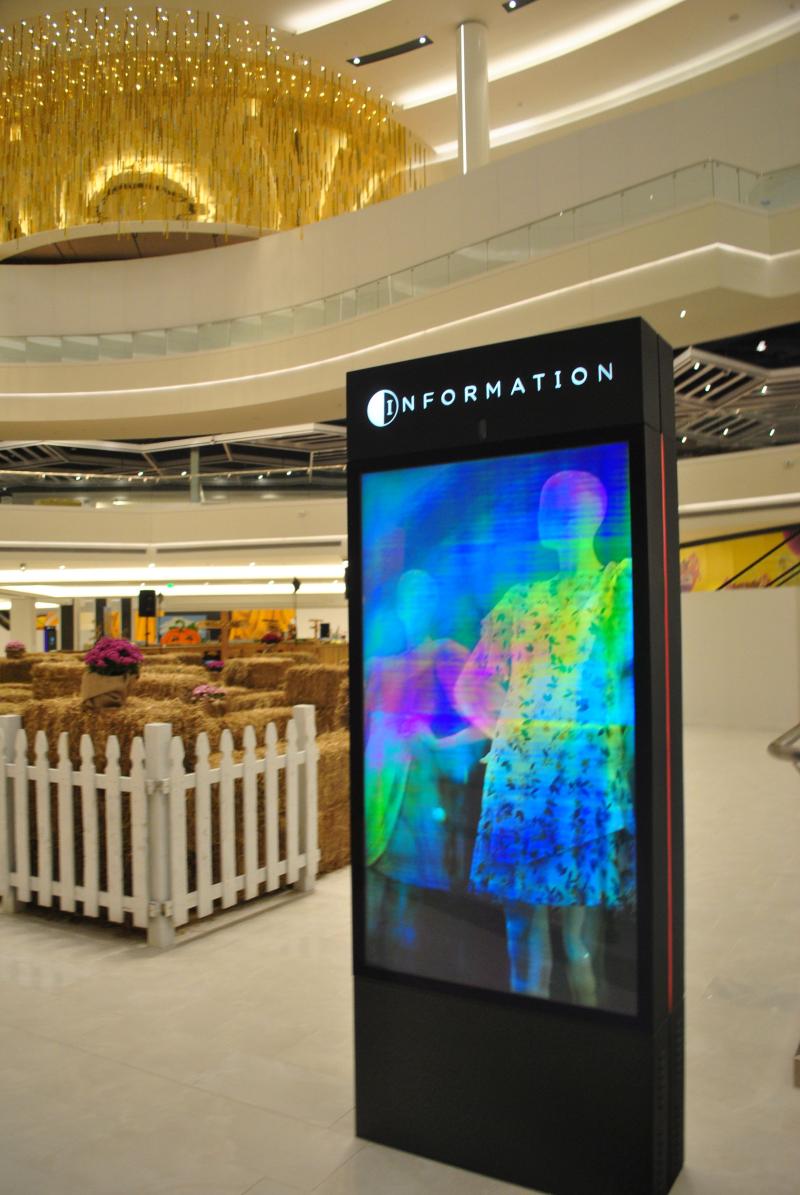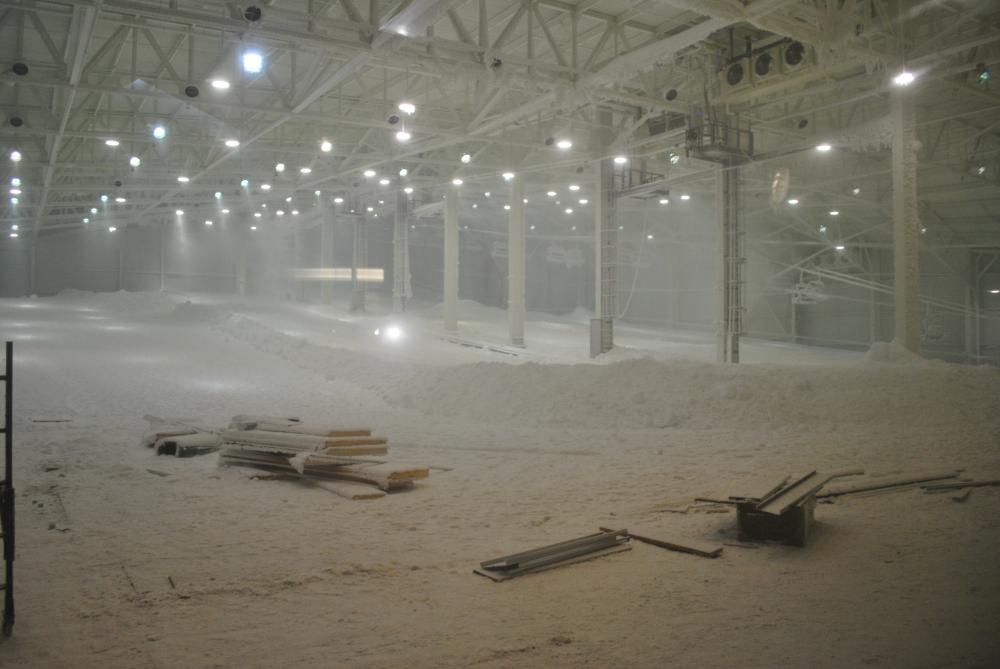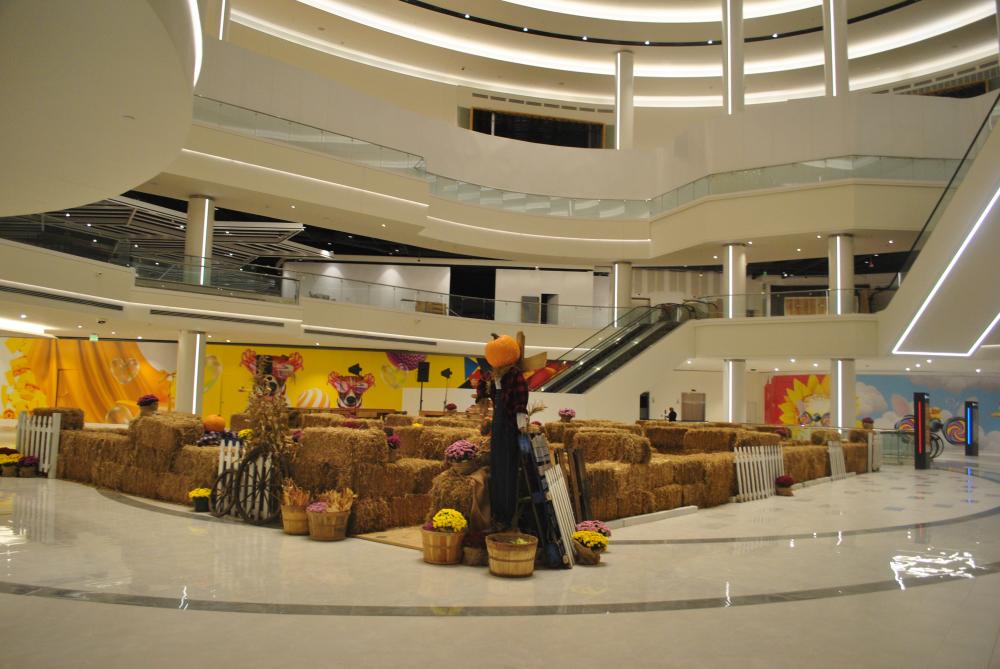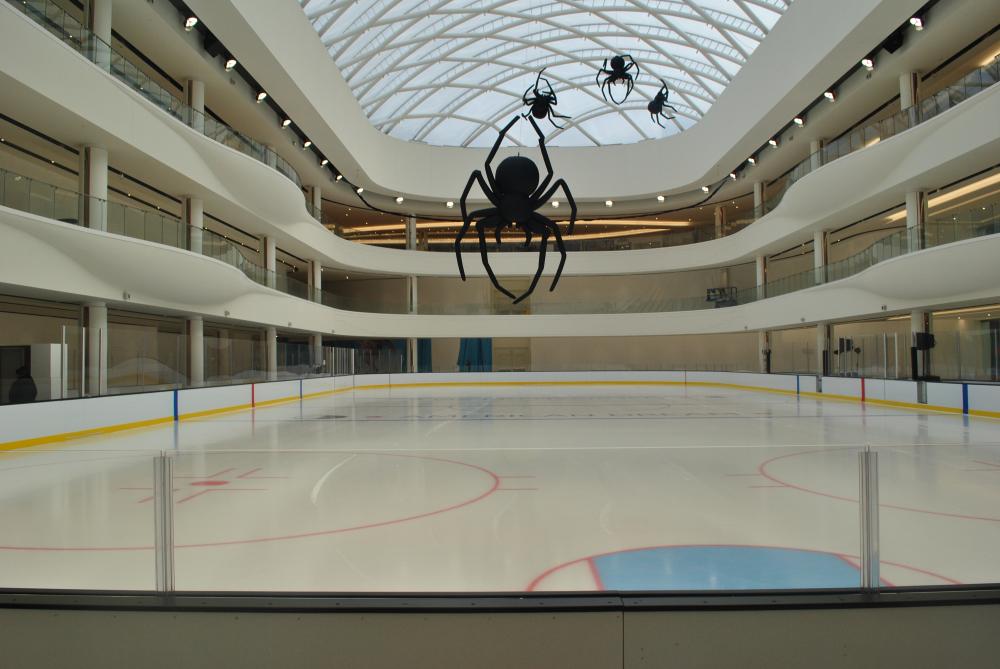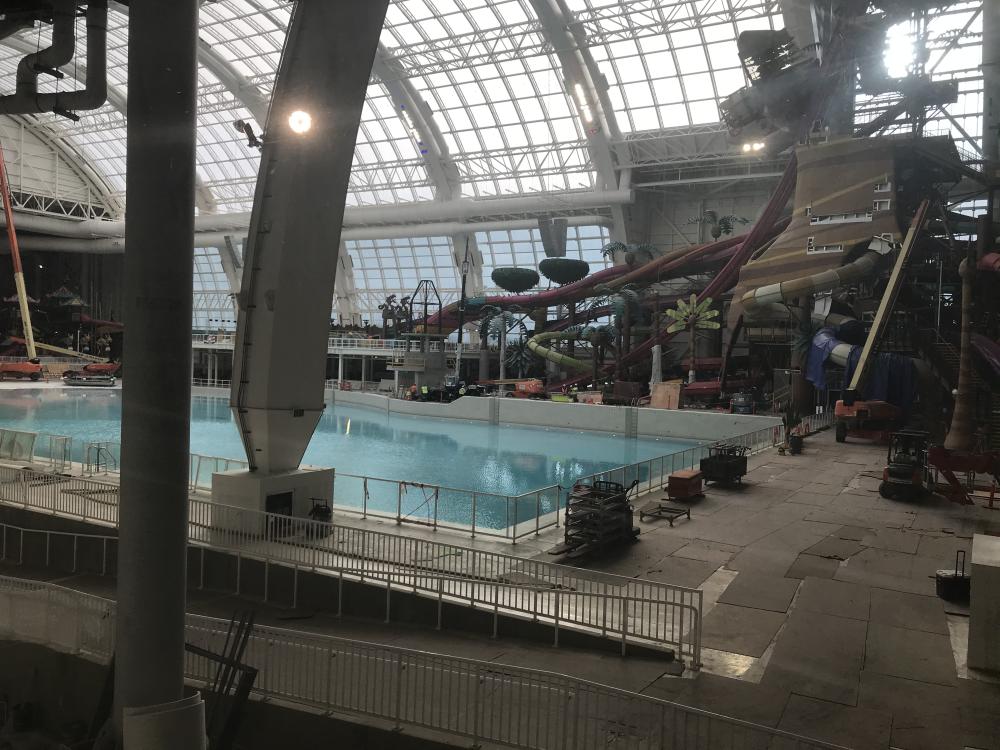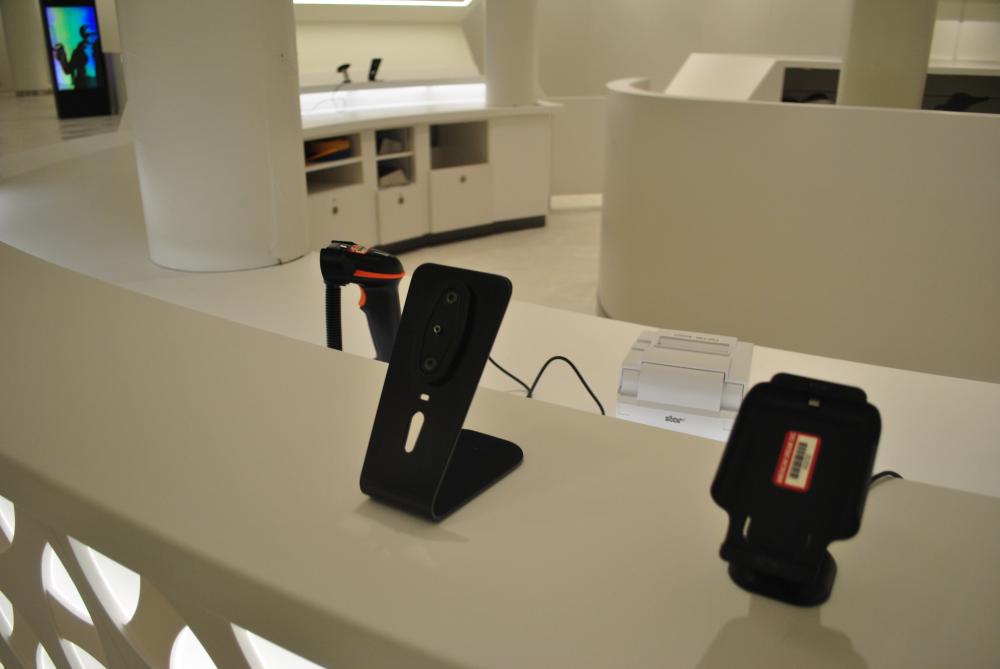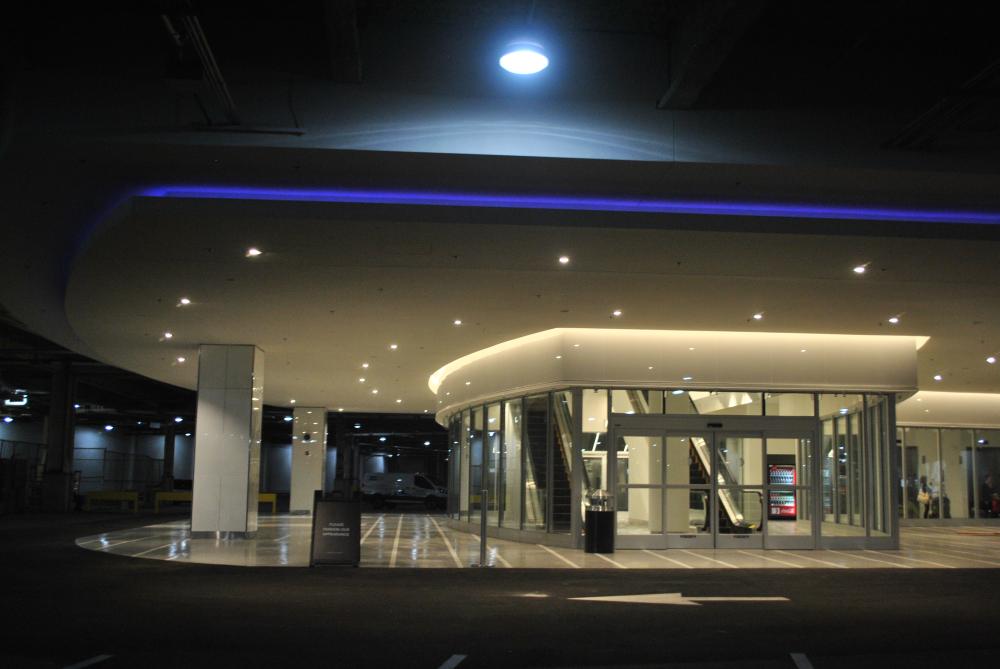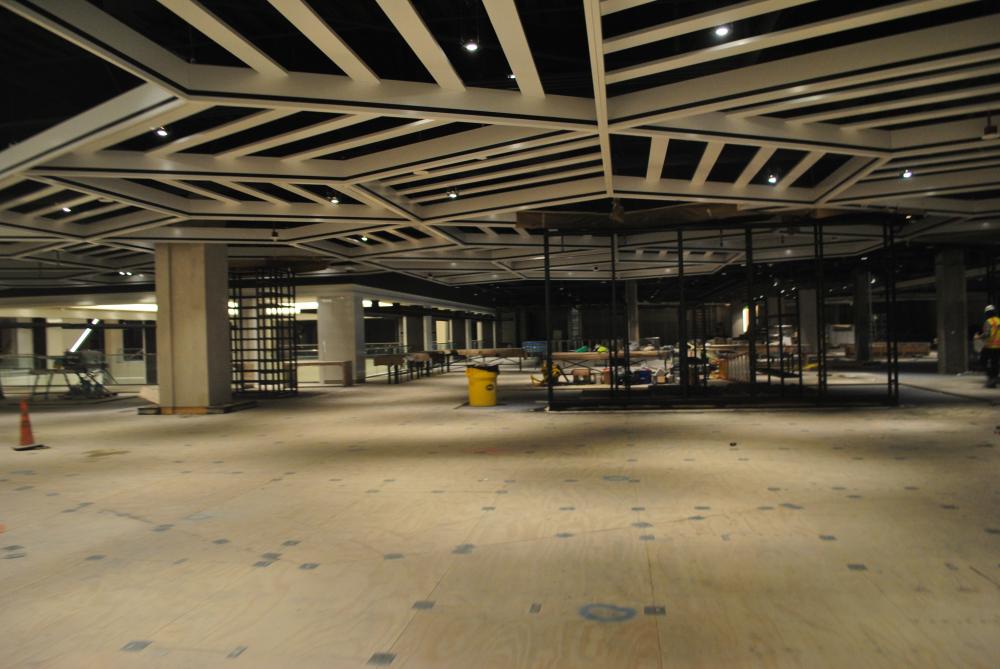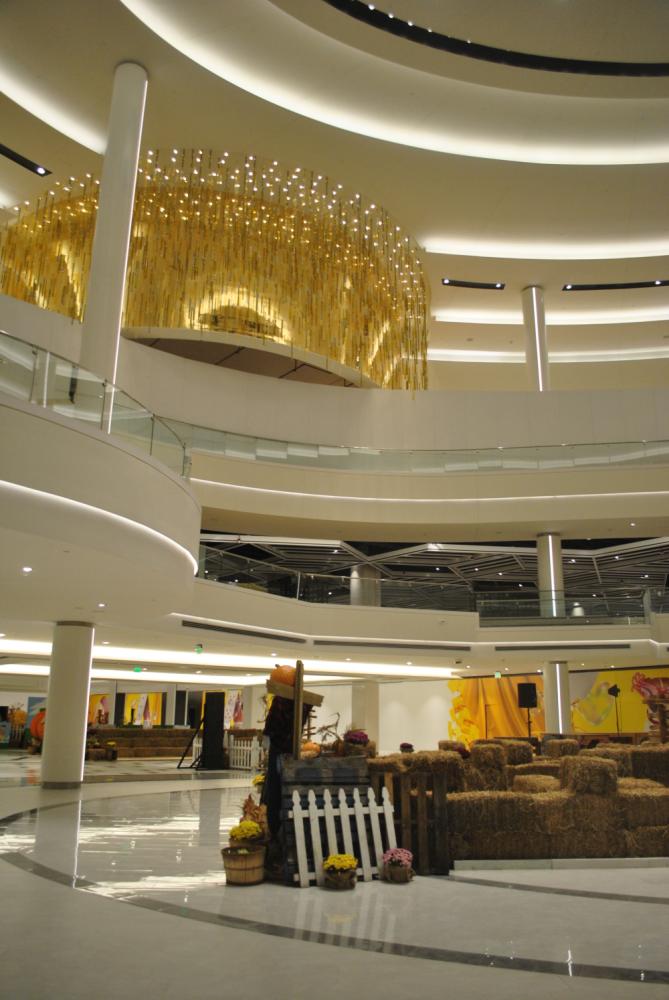Exclusive First Look: American Dream Retail and Entertainment Complex
The American Dream wants to be a place for retailers to be able to test and learn.
Whether you call it a megamall or a retail and entertainment complex, the 600-acre site in East Rutherford, NJ, is aiming to create an infrastructure that will support its retail tenants at a next-gen level and allow them to dream big. RIS took a tour of the buildings and learned what those big dreams might entail when plans are fully implemented.
While some of American Dream is now officially open, including the Nickelodeon Universe Theme Park and The Rink at American Dream, March 2020 is the planned debut for 350 shopping experiences in the property developed by Triple Five Group.
Some of the retailers on deck include Hermès, Dolce & Gabbana, Saint Laurent, Saks Fifth Avenue, Tiffany & Co., Zara, H&M, Uniqlo, Primark, and IT’SUGAR, a candy department store spanning 22,000 sq. ft. over three levels located within the entertainment atrium. In addition, over 100 dining destinations are expected.
The company’s goal is to be a "partner to its tenants" and to do this it has built a duel data center, fully redundant and a mirror image of each other, Mark Rewers, director of IT, American Dream, tells RIS. There is a generator on everything and to fail service to a tenant, according to Rewers, would require four simultaneous failures on two different levels within four hours of each other. What does American Dream plan to do with this massive architecture?
Rewers says it hopes to be a “soup kitchen” for its retail tenants. A place where they can set up a store and test marketing themes and ad campaigns. Looking for a place to run a real-time retail lab?
“This is the place we want you to come do it,” he says.
- Rewers explains the company’s IT plans in four phases:
- Stand up and open. This includes five wireless systems, audio and video, WiFi and cellular, and the mobile app.
- A second generation of the mobile app will eliminate a lot of the bugs. Running over WiFi American Dream will be able to track a shopper within one square meter, but not within the store. In this phase, American Dream will also launch its “own” cellular service, tied into its vehicular signs. Via OnGo technology, which was developed by the CBRS Alliance, the American Dream complex actually owns free and clear the segment of wireless spectrum it was granted. Its 3.5 GHz spectrum license enables it to create an exclusive wireless network within its facility that is managed by a controller and based on geolocation parameters. Since American Dream owns the spectrum free and clear it can continue to modify and innovate its network infrastructure as other cutting-edge technologies such as LTE and 5G evolve. Outside it will be able to update vehicular signs. Inside, when it pairs this with its RFID wristbands and the mobile app, American Dream will have a one meter visibility throughout all 600 acres of the property. This will provide visibility into both the parking deck and stores.
- In this phase, American Dream will use IoT to “marry it all together,” says Rewers. For example, shopping bags could include smart chips. A shopper could be in the waterpark, order purchases from their phone and have it delivered to them directly, shipped to home, or sent to a locker nearby for pickup. Paired with IoT data lost or stolen bags can quickly be identified. The property has 600 cameras currently up and running and will have 2000 CCTV and LIDAR cameras when finished. It will be able to tell how many Lexus vs Minivans come in and tell if there are adults with children getting out of the car. It will be able to track people in real-time, do crowd counting and do 3-D wayfinding with heat mapping, which will offer shoppers precise directions through the property to avoid congestion.
- In the final phase, once the company has the mobile app running and the loyalty program up, “we’re going to be doing blockchain,” says Rewers, and will implement American Dream dollars, which shoppers could pay for purchases with. It then plans to extend the currency to all of Triple Five Group’s properties, and eventually globally to its tenants, so that leftover currency could be used to shop the Saks Fifth Avenue, NY, location for example, one of the retail tenants currently planned for American Dream. Rewers says this is an “evolutionary thing” but would happen in 24-36 months hopefully.
“We’re building very aggressively here,” says Rewers.
In addition to historical data, the company hopes to provide retailers real-time with peak times of shopper segments. For example he says, the company will be able to tell retailers that a certain number of high-end shoppers have entered, based off vehicular data, and that they need to put more staff on the floor. Or that many shoppers passed a marketing ad in front of a store, but only some many came into the store, signifying that ad might not be working well. Another plan is to be able to set aside parking spots on demand for shoppers.
While American Dream’s retail technology dreams are still in the works, the property has the advantage that it’s building its technology from the ground up, explains Rewers, whereas the Mall of America, another Triple Five Group property, opened in 1992 before today’s tech advances.





